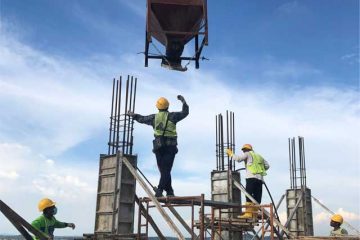Portable Appliance Testing
Updated after the release of AS/NZS 3012:2019
The following is an extract from AS/NZS 3760:2010 which provides the Indicative Testing and Inspection Intervals for Electrical Equipment – Portable Appliances and Residual Current Devices (RCD). As these are indicative they can be varied following a risk assessment, but generally, these should be regarded as the minimum requirements.
| CAUTION: This page must be read in conjunction with AS/NZS 3760:2010 as a whole, and particularly 2.1 | ||||||
|
Interval between Inspection and Tests by month |
||||||
|
|
RCD – Push Button Test – By User |
RCD – Operating Time and Push Button Test |
||||
|
Type of Enviro and/or Equip |
Equip Inc Class I, Class II Equip, Cord Sets, Cord Extension Sets, and Electric Portable Outlet Devices (EPOD) |
Portable |
Fixed |
Portable |
Fixed |
|
|
Factories, workshops, places of work or repair, manufacturing, assembly, maintenance or fabrication |
6 |
Daily, or before use, whichever longer |
6 |
12 |
12 |
|
|
Enviro where the equip or supply flexible cord is subject to flexing in normal use OR is open to abuse OR is a hostile environment |
12 |
3 |
6 |
12 |
12 |
|
|
Non hostile environment where the equip or supply cord is NOT subject to flexing in normal use and is NOT open to abuse |
60 |
3 |
6 |
24 |
24 |
|
|
Residential type areas of: hotels, residential institutions, motels, boarding houses, halls, hostels accommodation houses, etc. |
24 |
6 |
6 |
24 |
24 |
|
|
Equip used for commercial cleaning |
6 |
Daily, or before use, whichever longer |
N/A |
6 |
N/A |
|
|
Hire equip: |
Inspection |
Prior to hire |
Inc. push button test by hirer prior to hire |
N/A |
N/A |
|
|
Test and Tag |
3 |
N/A |
3 |
12 |
||
|
Repaired, serviced and second hand equip |
After repair or service which could affect electrical safety, or on reintroduction to service, refer to AS/NZS 5762 |
|||||
Residual Current Devices (RCD)
According to SafeWork’s Model Code of Practice for Managing Electrical Risk in the Workplace, RCDs should be used in the following circumstances:
- portable equipment in a hostile environment in which equipment or its cord is likely to suffer damage, degradation or heavy wear and tear through use or its transportation
- equipment forms part of, or is used in connection with, an amusement device.
Except where the supply:
- <= 50 V a.c., or is d.c.
- an equivalent level of protection is provided through an isolating transformer, or a non-earthed socket outlet supplied by an isolated winding portable generator
Construction and demolition sites
The following is extracted from Table 6 of AS/NZS 3012:2019. This standard provides the Indicative Testing and Inspection Intervals for Electrical Equipment – Portable Appliances and Residual Current Devices (RCD) on construction and demolition sites. Again these can be varied following risk assessment, but they should be regarded as the minimum requirements.
| CAUTION: This should be read in conjunction with AS/NZS 3760:2010, AS/NZS 3012:2019 and the Code of Practice for Managing electrical Risks in the Workplace | ||||||
| Interval between Inspection and Tests by month | ||||||
| Transportable structures, Class I (earthed conductive parts) and Class II (doubled insulated) electrical equipment | RCD – Push Button Test – By User | RCD – Operating Time and Push Button Test – By Tester | ||||
| Type of Enviro and/or Equip | Transportable structures, fixed and transportable equipment and construction wiring including switchboards | Portable | Portable | Fixed | Portable | Fixed |
| Construction and demolition sites | 6 | 3 | Before use | 1 | 3 | 12 |
More Help?
If you need help interpreting these requirements, contact us.


